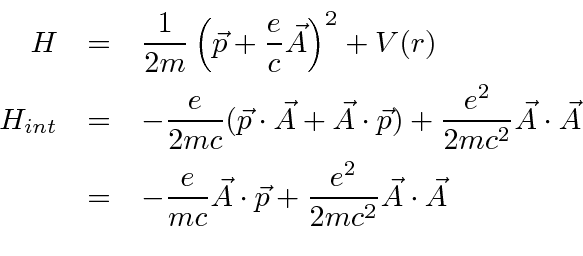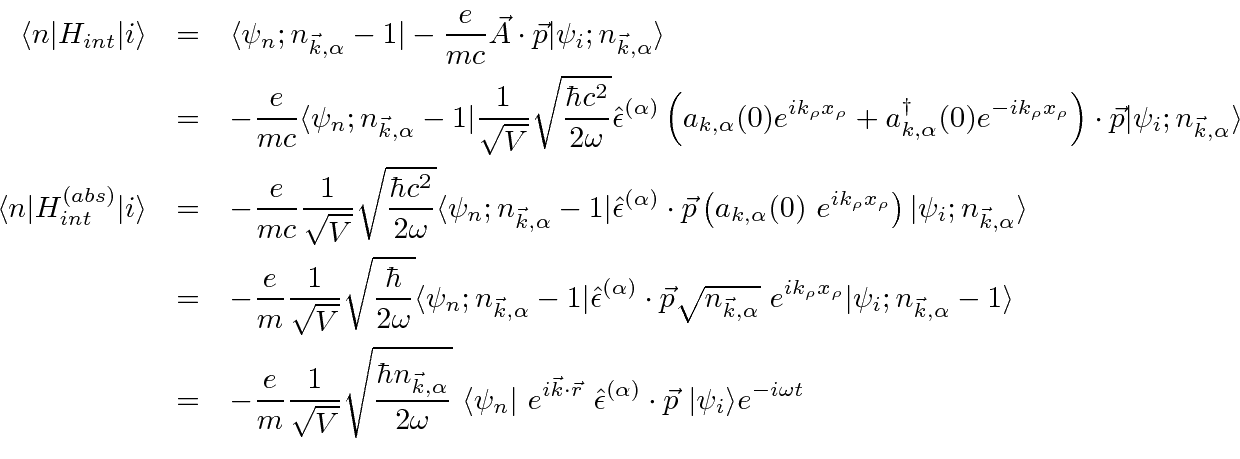Next: Review of Radiation of Up: Quantum Theory of Radiation Previous: Uncertainty Relations and RMS Contents

 .
.
 |
This interaction Hamiltonian contains operators to create and annihilate photons
with transitions between atomic states.
From our
previous study of time dependent perturbation theory,
we know that transitions between initial and final states are proportional to the
matrix element of the perturbing Hamiltonian between the states,
 .
The initial state
.
The initial state
![]() should include a direct product of the atomic state and the photon state.
Lets concentrate on one type of photon for now.
We then could write
should include a direct product of the atomic state and the photon state.
Lets concentrate on one type of photon for now.
We then could write

We will first consider the absorption of one photon from the field.
Assume there are
 photons of this type in the initial state and that
one photon is absorbed.
We therefore will need a term in the interaction Hamiltonian that contains on annihilation operator (only).
This will just come from the linear term in A.
photons of this type in the initial state and that
one photon is absorbed.
We therefore will need a term in the interaction Hamiltonian that contains on annihilation operator (only).
This will just come from the linear term in A.


 in the emission operator.
in the emission operator.
Jim Branson 2013-04-22